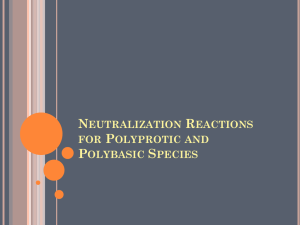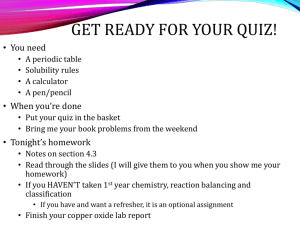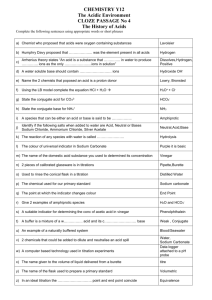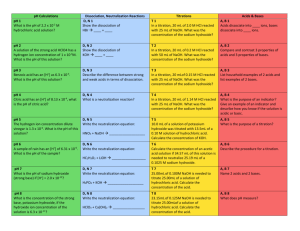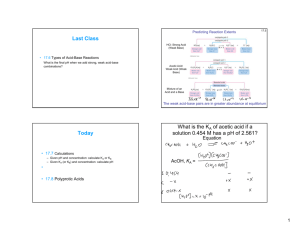U2 S3 L5 polyprotic
advertisement
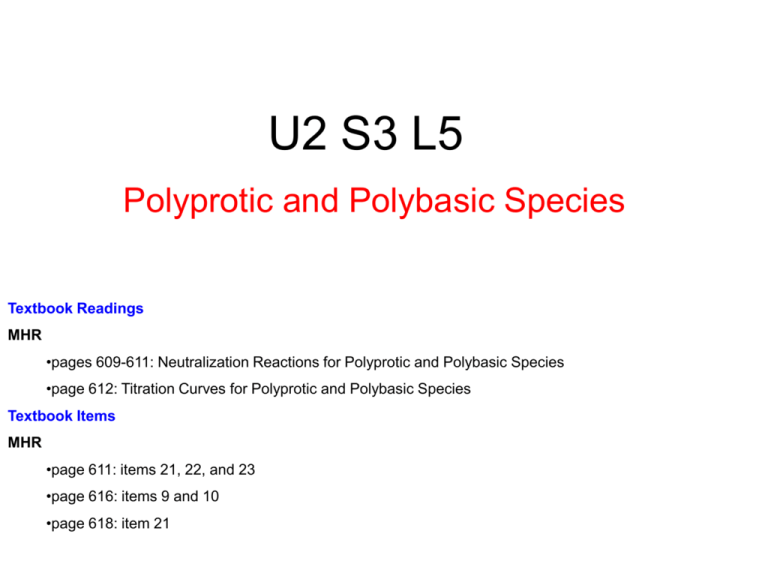
U2 S3 L5 Polyprotic and Polybasic Species Textbook Readings MHR •pages 609-611: Neutralization Reactions for Polyprotic and Polybasic Species •page 612: Titration Curves for Polyprotic and Polybasic Species Textbook Items MHR •page 611: items 21, 22, and 23 •page 616: items 9 and 10 •page 618: item 21 Upon completion of this lesson, you should be able to: • define polyprotic species and polybasic species • write single step and overall equations for an acid-base reaction involving a species that can accept or donate more than one proton • draw and interpret titration curves for acid-base reactions involving polyprotic or polybasic species Monoprotic Acids • A mono-protic acid is a acid that can donate only one hydrogen. – Ie: hydrochloric acid, nitric acid. Polyprotic acids – (diprotic / triprotic) • Polyprotic Acids - acids that have the ability to donate more than one proton per molecule are classified as polyprotic species. – Sulfuric acid is a good example: Diprotic titration Curve: Titration of Sulfuric acid with standard NaOH Poly basic • Polybasic – the ability to attracted more than one proton. – Ie: carbonate ion. Diprotic titration Curve: Titration of sodium carbonate with standard HCl 1. Write the reaction steps and the net ionic equation for the quantitative reaction between each pair of substances. a. phosphoric acid and sodium hydroxide (two quantitative steps) b. sodium sulfide and hydrochloric acid c. selenic acid (H2SeO4) and sodium hydroxide d. citric acid, H3C6H5O7, and sodium hydroxide (two steps) 2. Sketch a titration curve for the titration of a 0.100 M phthalic acid, H2C8H4O4, with sodium hydroxide solution. Assume two quantitative steps. 3. A sodium hydrogen phosphate solution is titrated with hydrochloric acid. Only one quantitative reaction is observed. Write the Brønsted-Lowry equation for the reaction and sketch the pH curve.
